Как продиктовать свой e-mail
точка в адресе сайта называется – dot
www.lingvaflavor.com - www dot lingvaflavor dot com
если при диктовке почтового адреса у вас встречаются имя и фамилия вместе - говорите «alloneword»
[email protected] - ivanivanov (all one word) at dot net
/— так и будет slash
www.google.com/images - www dot google dot com slash images
дефис - hyphen
[email protected] - i hyphen love hyphen english at gmail dot uk
@ - в английском языке называется "at"
нижнее подчеркивание – underscore.
Exercise 15: Write a short e-mail letter about your winter practice in the hospital.
Exercise 16:Say in English: [email protected]; [email protected];
say your e-mail in English.
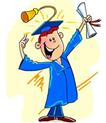


Exercise 17:Before translation study the theory of translation – neologism
Неологизмы - слова из раздела безэквивалентной лексики. К ним относятся как лексические единицы, которые уже вошли в словари новых слов, так и те, что еще не зарегистрированы в них. Неологизм определяется как новое слово (устойчивое сочетание слов), новое либо по форме, либо по содержанию, либо по форме и содержанию.
В переводческой практике, в тех многочисленных случаях, когда отсутствует эквивалент перевода, при передаче неологизмов с английского языка на русский используется ряд приемов. К ним относятся:
1. Транслитерация:Весенняя улица - Vesennyaya ulitsa, Красноярский край - Krasnoyarskiy krai)
2. Калькирование:дом культуры - House of Culture; парк культуры и отдыха - Park of Culture and Rest
3. Транскрибирование:Иван Грозный - Ivan Groznyy
4. Описательный перевод: landslide - победа на выборах с большим перевесом голосов, brinkmanship- искусство держать мир на грани войны.
Переводов неологизмов убеждает нас в том, что самым распространенным оказывается перевод путем подбора соответствующего аналога на другом языке. К сожалению, словари неологизмов на русском языке издаются крайне редко. Переводчик многое мог бы почерпнуть из таких словарей. В эпоху массовой коммуникации существуют поистине беспрецедентные возможности для развития и распространения неологизмов. Ярким тому доказательством является язык прессы нашего времени. Язык американской прессы чуть ли не ежедневно обогащается неологизмами. Многие из них, правда, так и остаются "неологизмами-однодневками", тогда как другие "слова-экспромты" все же постепенно переходят в основной словарный фонд. Для перевода неологизмов можно использовать:"Webster"s New International Dictionary", "The American Heritage" или электронный ресурс abbyy lingvo.com
Exercise 18:Before translation make a back-ground analysis: DNA,microRNAs, oncogenes, chemotherapy and radiotherapy.
Exercise 19:Translate the text:
CANCER
1. Cancer (medical term: malignant neoplasm) is a class of diseases in which a group of cells display uncontrolled growth (division beyond the normal limits), invasion (intrusion on and destruction of adjacent tissues), and sometimes metastasis (spread to other locations in the body via lymph or blood). These three malignant properties of cancer differentiate them from benign tumors, which are self-limited, do not invade or metastasize. Most cancers form a tumor but some, like leukemia, do not. The branch of medicine concerned with the study, diagnosis, treatment, and prevention of cancer is oncology.
2. Cancer may affect people at all ages, even fetuses, but the risk for most varieties increases with age. Cancer causes about 13% of all deaths. According to the Russian Cancer Society, 7.6 million people died from cancer in the world during 2007. Cancers can affect all animals. Nearly all cancers are caused by abnormalities in the genetic material of the transformed cells. These abnormalities may be due to the effects of carcinogens, such as tobacco smoke, radiation, chemicals, or infectious agents. Other cancer-promoting genetic abnormalities may be randomly acquired through errors in DNA replication, or are inherited, and thus present in all cells from birth. The heritability of cancers is usually affected by complex interactions between carcinogens and the host's genome. New aspects of the genetics of cancer pathogenesis, such as DNA methylation, and microRNAs are increasingly recognized as important.
3. Genetic abnormalities found in cancer typically affect two general classes of genes. Cancer-promoting oncogenes are typically activated in cancer cells, giving those cells new properties, such as hyperactive growth and division, protection against programmed cell death, loss of respect for normal tissue boundaries, and the ability to become established in diverse tissue environments. Tumor suppressor genes are then inactivated in cancer cells, resulting in the loss of normal functions in those cells, such as accurate DNA replication, control over the cell cycle, orientation and adhesion within tissues, and interaction with protective cells of the immune system.
4. Diagnosis usually requires the histologic examination of a tissue biopsy specimen by a pathologist, although the initial indication of malignancy can be symptoms or radiographic imaging abnormalities. Most cancers can be treated and some cured, depending on the specific type, location, and stage. Once diagnosed, cancer is usually treated with a combination of surgery, chemotherapy and radiotherapy. As research develops, treatments are becoming more specific for different varieties of cancer. There has been significant progress in the development of targeted therapy drugs that act specifically on detectable molecular abnormalities in certain tumors, and which minimize damage to normal cells. The prognosis of cancer patients is most influenced by the type of cancer, as well as the stage, or extent of the disease. In addition, histologic grading and the presence of specific molecular markers can also be useful in establishing prognosis, as well as in determining individual treatments.
Exercise 20:Work with the group - Read the text once again and find out if the information
a) True
b) False
c) The text doesn’t contain any information:
| Questions | Answers |
| 1.All kinds of cancers form a tumor. | * |
| 2.The branch of medicine concerned with the study, diagnosis, treatment, and prevention of cancer is oncology. | * |
| 3.Cancers can’t affect animals. | * |
| 4.Cancer can occur in any organ of the body. | * |
| 5.Most cancers can be treated and some cured, depending on the specific type, location, and stage. | * |
| 6.Genetic abnormalities found in cancer typically affect three general classes of genes. | |
| 7.Cancer is usually treated with a combination of surgery, chemotherapy and radiotherapy. | |
| 8.Cancer can’t be treated with drugs. |
Exercise 21:Work with the group - Read the text once again and point out the abstract number of the following sentences:
1)Treatments are becoming more specific for different varieties of cancer.
1) 2
2) 1
3) 3
4) 4
2)The heritability of cancers is usually affected by complex interactions between carcinogens and the host's genome.
1) 4
2) 3
3) 2
4) 1
Exercise 22:Work with a group - Answer the questions:
1. What is cancer?
2. 
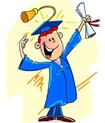
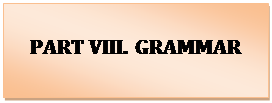 What causes cancer
What causes cancer
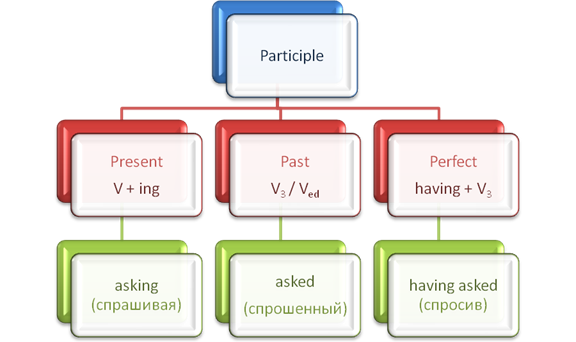
Exercise 23:Open the brackets using Participle I or Participle II, Perfect Participle (active or passive):
1. Complex mixtures of hydrocarbon compounds (contained, containing) only carbon and hydrogen occur in very large quantities in nature.
2. In 1820 some amino acids were isolated in crystalline form from solutions (preparing, prepared) by heating proteins with mineral acid.
3. In the 20th century the vitamins and the elements (requiring, required) only in small amounts were discovered.
4. The most important medicines (discovered, discovering) in the twentieth century are vitamins made by partial synthesis, irradiation, fermentation and other methods.
5. For the determination of vitamins B, the (testing, tested) solution was diluted with water.
6. The (colouring, coloured) matter is used in the production of some perfumes.
7. A perfume is a material (consisting, consisted) of one or more volatile constituents.
8. (Having calculated, having been calculated) the coefficients, they could write the equation of the chemical reaction.
9. (Having dissolved, having been dissolved), the substance was filtered, evaporated and dried.
10. (Having found, having been found) the necessary solvent, they purified the compound by recrystalization.
11. (having synthesized, having been synthesized ), the compound was cooled, weight and analyzed.
12. (Having purified, having been purified), silica was used as an absorbent.
13. (Having removed, having been removed) impurities, they determined the composition and structure of the synthesized compound.
14. (Having used, having been used) volatile compounds, they modified chemical surface of the solids.
15. (Having accepted, having been accepted) electrons, the ions reduced to the metallic form.
Exercise 24:Translate the sentences into Russian:
1. Grass is a green, leafy, flowering plant.
2. More than 80% of all plants living today are flowering plants.
3. A leaf is the main food-making part of a plant.
4. Fast moving water has kinetic energy.
5. Matter is changing all the time because of changing conditions in the world around us.
6. Zinc containing enzymes regulates growth, development longevity and fertility.
7. An isotope of a chemical element consists of atoms having the same number of neutrons.
8. The number of electrons revolting around the nucleus of an atom is equal to its atomic number.
9. Solutions of acids have a sour taste and produce a burning feeling when they touch skin.
10. Oxygen is a highly reactive substance, readily combining with many other elements in the process of oxidation.
11. In naturally occurring compounds, boron exists as a mixture of two stable isotopes with atomic weights of 10 and 11.
12. Salts resulting from the combination of strong acid sand weak bases will give acidic water solutions.
13. Carbon dioxide is the focus of public concern in recent years due to the increasing concentrations of this gas in the atmosphere as a result of the combustion of fossil fuels.
14. The actual volume of the molecules making up the air is only about 1/1000th of the total volume of the gas.
Exercise 25:Suggest the English equivalents for the following words combination:
1) кипящая вода – кипяченая вода
охлаждающая жидкость – охлажденная жидкость
студенты, обсуждающие результаты теста – обсужденные тесты
осушающее вещество – осушенное вещество
окисляющий реагент - окисленная форма
выделяющий газ – выделенный газ
2) определив состав продуктов реакции – определяя плотность вещества
нагрев раствора – нагревая раствор
охладив жидкость – охлажденная жидкость
получив требуемый продукт – получая требуемый продукт
осушив кристаллы – осушая кристаллы
удаляя пары воды – удалив пары воды
разбавляя раствор – разбавив раствор
повышая концентрацию растворенного вещества – повысив концентрацию растворенного вещества
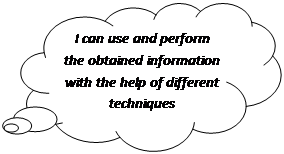 изучая законы химии – изучив основные законы химии
изучая законы химии – изучив основные законы химии
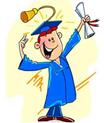

During the lesson we’ve the topic “Medical care in Great Britain and in Russia”. Make a short report about this topic.You may do it as a “PowerPoint Presentation”, assay, portfolio etc.
 |
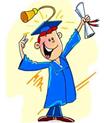

Exercise 26:Open the brackets using Participle I or Participle II:
1. ____________ (to smile) she entered the room.
2. The girl ____________ (to write) something on the blackboard is my friend.
3. This is a letter ____________ (to address) to you.
4. I like to read stories. ____________ (to write) by this writer.
5. Do you know the boys ____________ (to play) tennis now?
6. ____________ (to read) this book I wrote out many useful expressions.
7. Nelly entered the room ____________ (to bring) the nice big doll.
8. Many people who came to the museum liked the pictures ____________ (to paint) by this artist.
9. There was a small kitten ____________ (to play) on the sofa.
10. While ____________ (to read) this book I always remember my childhood.
11. All stories ____________ (to write) by this writer are very funny.
12. Look at the children ____________ (to play) in the yard.
13. The report ____________ (to do) by Hammer is of great importance.
14. The boy asked questions ____________ (to look) at us.
15. Nelly spoke about her brother ____________ (to live) in London.
16. ____________ (to go) through the park I met my teacher.
17. He didn’t go to the cinema with us, ____________ (to say) that he was busy.
18. The man ____________ (to stand) at the window is a well-known actor.
19. We were walking about the hall ____________ (to look) at the pictures on the wall.
20. ____________ (to answer) the questions John made a mistake.
21. Mary found the key____________ (to lose) by me yesterday.
22. They fell asleep quickly, ____________ (to be tired) by their journey.
23. I live in a house ____________ (to build) a hundred years ago.
24. Did you understand the rules ____________ (to explain) to us yesterday?
25. You must learn all the words ____________ (to give) by the teacher.
Exercise 26:Use the right form:
